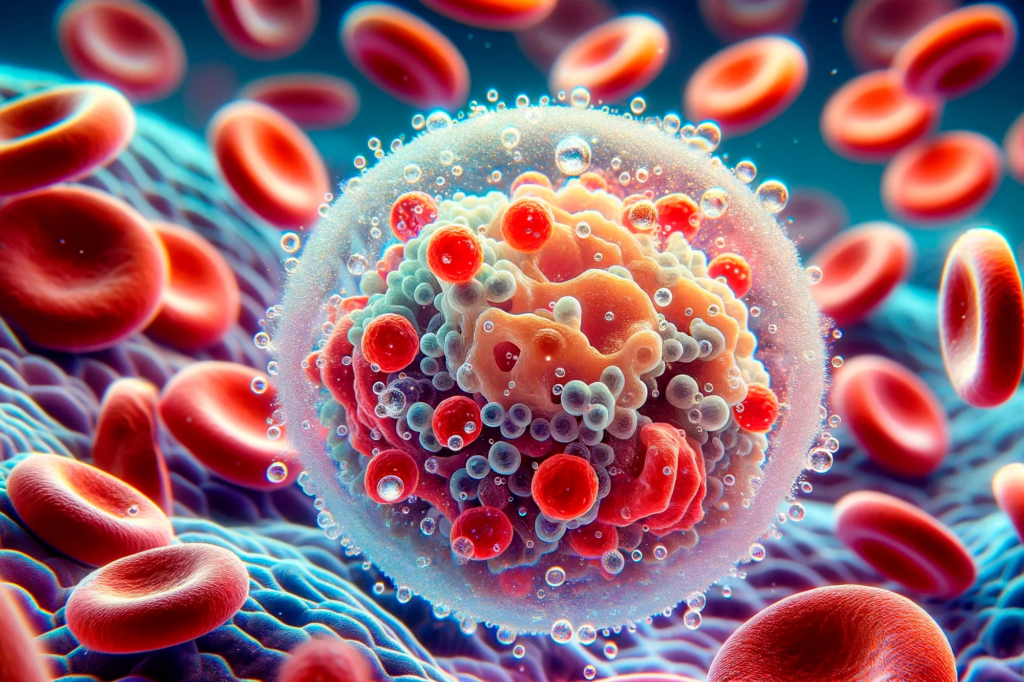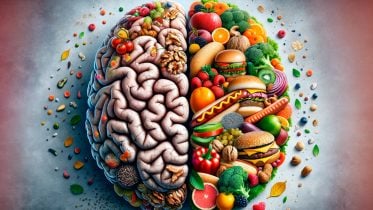
Researchers at the University of Connecticut found that extra-cellular vesicles (EVs) in human cells can transport bacterial products to other cells, impacting health. This discovery, which elucidates how bacterial elements enter cells, has significant implications for understanding immune responses and cellular communication. Credit: SciTechDaily.com
It’s well known that bacterial products can get inside human cells; Now, researchers can finally explain how.
Messenger bubbles produced by human cells can pick up bacterial products and deliver them to other cells, University of Connecticut researchers report in the journal Nature Cell Biology. The discovery may explain a key mechanism by which bacteria, whether friendly or infectious, affect our health.
The Function of Extra-Cellular Vesicles (EVs)
Extra-cellular vesicles (EVs) are like a postal service for our cells. Cells produce the EVs, tiny bubbles with a water-resistant shell made of fatty substances called lipids, and send them into the bloodstream. When another cell comes across an EV, it takes it inside itself and opens it up. Inside the EVs are usually molecules that act as messages informing the receiving cell’s behavior or growth.
An Unexpected Discovery
Now, University of Connecticut School of Medicine immunologists Puja Kumari, Vijay Rathinam, and colleagues report that EVs do something else, entirely unexpected. The walls of an EV can pick up pieces of bacteria, which usually have a lipid section that easily slips into the lipid walls of the EV. The EV then brings the bacterial products along with its other contents inside of whichever human cell snags it.
“We found EVs patrol the circulation for systemic microbial products and alert an immune surveillance network inside the cell,” says Kumari, a postdoctoral researcher in the Rathinam lab.
Solving a Cellular Mystery
This solves a longstanding mystery. Researchers knew that our cells have receptors inside of them that detect bacterial products. But they didn’t know how those bacterial products actually got inside of our cells.
“We understood which microbial products go into circulation,” says Rathinam, an associate professor in the department of immunology. The products can come from infectious bacteria invading, or they can come from friendly bacteria, for example, the ones that live in our intestines. When the receptors inside of cells detect them, the signals from bacteria can help the gut, immune system, and even brain function properly. Or they can cause cells to explode themselves and cause inflammation, depending on the type of bacteria and the product involved. “But we didn’t know how microbial products reaching the blood from harmful or friendly bacteria go from outside the cell to inside the cell,” Rathinam says.
Proving the Transport Mechanism
To show that EVs were actually transporting the bacterial pieces and bringing them into cells, Kumari, Rathinam, and their colleagues did a series of experiments. First, they injected green-labeled LPS, a product made by bacteria, into mice. After about an hour, they found the green LPS on EVs in the mice’s blood. Second, when they transferred these EVs with green LPS to another group of mice, they found green LPS inside the cells in the recipient mice, setting off inflammation.
Although they have not yet tried the experiments with microbial products other than LPS, they suspect a similar thing would happen.
“We think this has a role in normal physiology as well as in infections. Microbial products from microbiota in the gut are released into circulation, and are important for the body. EVs may have a good, beneficial role in that,” says Rathinam.
Reference: “Host extracellular vesicles confer cytosolic access to systemic LPS licensing non-canonical inflammasome sensing and pyroptosis” by Puja Kumari, Swathy O. Vasudevan, Ashley J. Russo, Skylar S. Wright, Víctor Fraile-Ágreda, Dylan Krajewski, Evan R. Jellison, Ignacio Rubio, Michael Bauer, Atsushi Shimoyama, Koichi Fukase, Yuanpeng Zhang, Joel S. Pachter, Sivapriya Kailasan Vanaja and Vijay A. Rathinam, 16 November 2023, Nature Cell Biology.
DOI: 10.1038/s41556-023-01269-8

Leave a Reply
You must be logged in to post a comment.